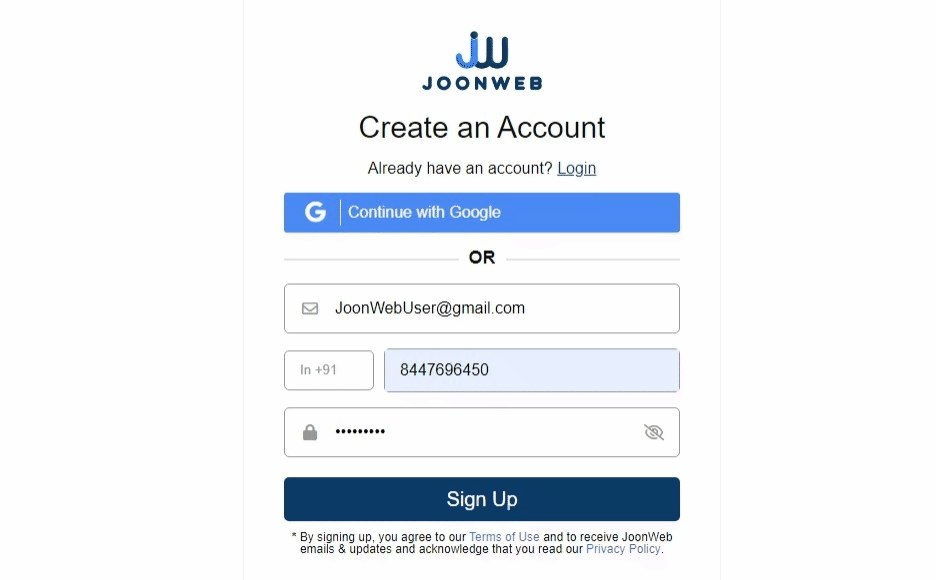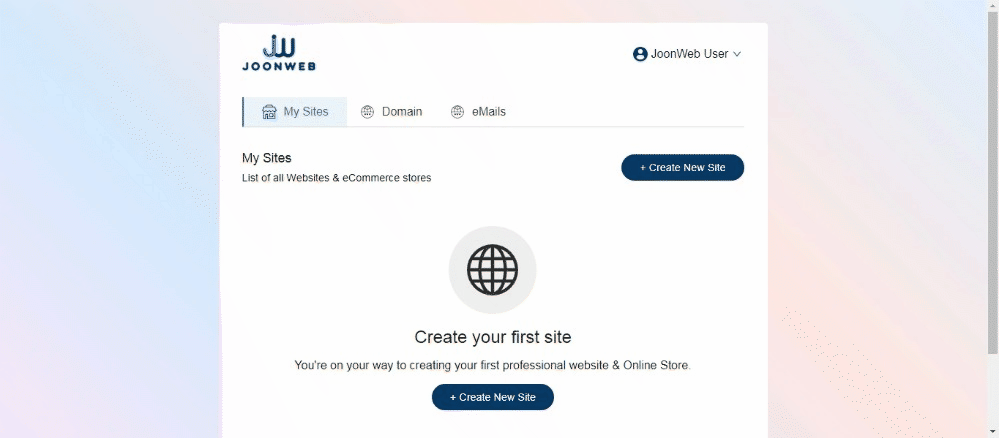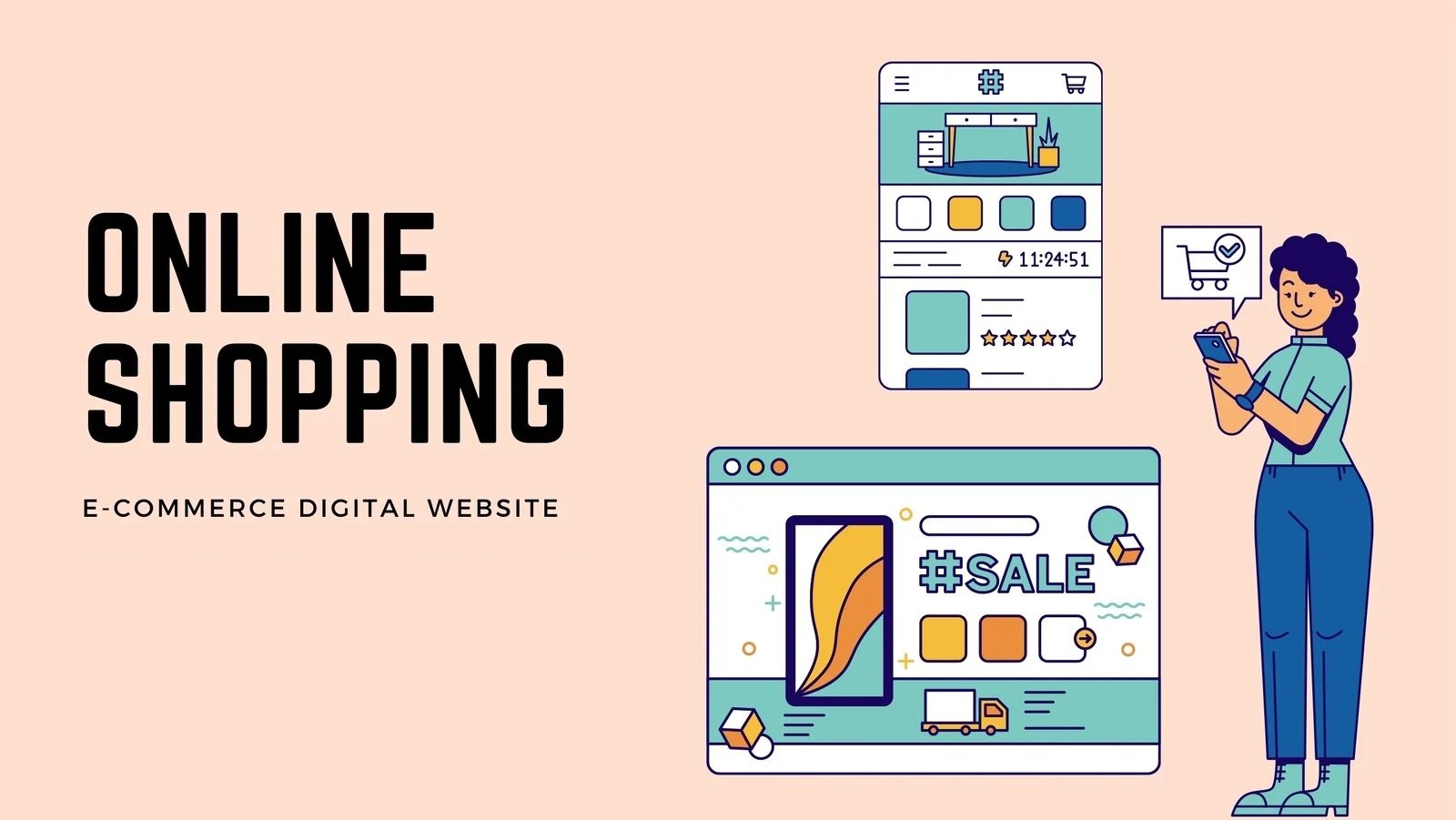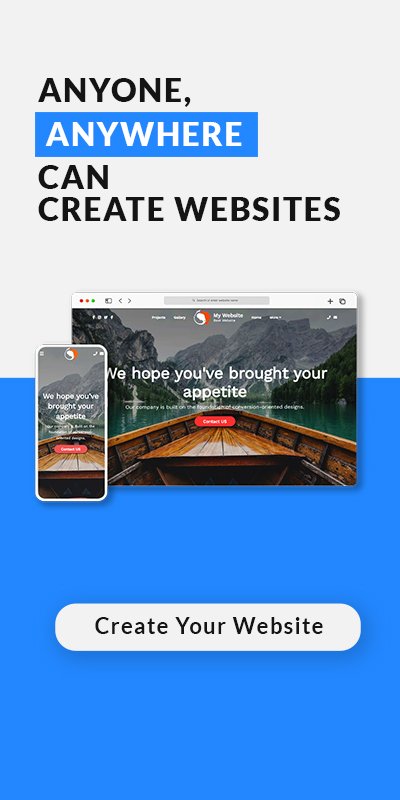The internet affects every part of our lives. We use it to socialize, have fun, work, and conduct research. We also utilize it for shopping. There is now a generation of adults who have grown up in an internet-only society, and as they and subsequent generations spend more money, eCommerce will grow.
Currently, about 43 percent of customers use the internet and social networks to study products before purchasing, and eCommerce sales in India will be worth $300 billion (approx.) by 2030. If you create a shopping website now, the chances of its growth are very high.
Table of Contents
1. Need for eCommerce Websites
2. Why Create An eCommerce Website?
3. eCommerce Website Features List
4. How to create an eCommerce website at JoonWeb?
5. Make Additional Changes Once Your eCommerce Website Is Live
What do eCommerce Websites offer?
If retailers want to contact customers, they cannot afford to remain offline. eCommerce sites enable firms to reach new markets and develop resilience by selling even if their physical stores must close. If you're just getting started, an eCommerce site can provide you with a global market and brand awareness before you even open a physical store.
Starting your own eCommerce website allows you to control all aspects of your client's experience, from branding to shipping and customer service. You can construct it yourself or hire a developer, but knowing the process can help you make informed decisions and create an eCommerce website that's optimized for selling your items. If you are wondering how to build an eCommerce website? Then you have come to the right place.
Why Create An eCommerce Website?
A website that lets customers buy and sell physical things, services, and digital products online instead of stepping out for a physical store visit. A business can use an e-commerce website to handle orders, receive payments, manage shipping and logistics, and provide customer care. In order to create an eCommerce website, one needs to have a vast knowledge of coding & website designing. However, there's another way, and that is web builders.
Before you dive deep into the topic 'how to make an eCommerce website', here are some of the major reasons why eCommerce websites have become a necessity today:
- One-of-a-kind Digital Shopping Experience
Online businesses can also have a direct impact on the consumer journey by providing a one-of-a-kind buying experience via films, stories, and personalized services. These shopping experiences do not have to finish at the checkout since you can reach clients through email marketing or social media. These amazing experiences have a way of convincing people that online shopping provides inclusive opportunities that a traditional store does not.
- Helps Further Market Acquisition
With only a storefront, it can be difficult for many firms, particularly small businesses, and startups, to attract customers in new markets. An eCommerce site allows you to access new clients online that you would not have been able to contact with simply brick-and-mortar sales.
- Make Your Brand More Powerful
When you sell on an online marketplace like Flipkart or Amazon, your products are often advertised generically and with the platform's logo. Some clients may not even notice they are buying from you and, as a result, will not go through your brand. You have complete control over how your products are displayed when you build your own eCommerce site. Your clients will remember you, not the market.
- Protect Your Business From Natural Uncertainties
We all know that so many small & medium eCommerce businesses were affected badly during the COVID-19 pandemic & some of them even had to shut down their offices as well. To protect themselves from facing such tragedy, businesses now tend to take the online route. eCommerce websites make sure that a business keeps on running smoothly without getting completely shut down.
How to create an eCommerce website at JoonWeb?
By following these steps one can easily learn how to create an eCommerce website at JoonWeb:
- Create An Account On JoonWeb: First of all, you need to get registered with JoonWeb in order to start building a website. Click on Try For Free, then you have to sign-up using your Email and phone number. In addition, you can also sign-up by clicking on Continue with Google.

JoonWeb account sign-up -
Create your eCommerce website: Joonweb.com allows you to choose the type of website you wish to create. After creating your account, you will be taken straight to your website OR On your homepage, under My Sites tab, click on Create New Site. Enter your Website Name, choose Website Type (eCommerce) & Choose Category & click Continue

Website details -
Choose layout and color scheme: To proceed, you must first choose one of the available templates & color schemes.
Select a Layout you like & pick up your website color & click Continue. Always remember, you can make changes, whenever you want.

Make Additional Changes Once Your eCommerce Website Is Live
Once your website is live, you can simply click on the Edit Site button & start making the desired changes as per your needs. JoonWeb provides you with a plethora of options to modify your eCommerce platform as per your needs. After Creating an eCommerce website, you can make the following changes:
Once you reach your website's dashboard, remember to complete your store setup as soon as possible if you want to start selling.
Follow these steps to complete your store setup:
Add Products
Begin by adding your first product to your store. Display products you want to sell, digital downloads, services, or anything else you may think of. On your website's dashboard click on Add product under Add Your First Product option OR navigate to the left sidebar and click on Products and the click on Add Product.
Customize your store front and add pages
After adding the products, the next step is to edit the website the way you want it to look. You can also add relevant pages to your eCommerce website as per the number of products you want to sell.
On your website's dashboard, click on Customize Storefront button under Customize Your Storefront & Add Pages option. After that you will be taken to the JoonWeb builder and now you can add pages to your website by clicking on \Add Page option on the top left.

You can also add web pages to your site by clicking on Edit Site option at the top.

Setup payment method
Setting up payment is of the most the important steps while completing your store setup as your website's survivablity depends on it. On your website's dashboard, click on Set Up payments button under Set up Payment Method option.

Now click on activate in front of the payment partner you choose and enter necessary details that include KEY ID and KEY SECRET.

Connect Domain
On your website's dashboard, click on Add Domain button under Connect Domain option. Now click on Buy New domain if you want to purchase a new domain or Connect existing Domain if you already have one.

You can check the availability of the domain name you choose. When the domain becomes available, you must click "Buy Now" to go to the checkout and place an order for it. You will be able to connect your custom domain to your website with a plan after successful payment.

You can also click on the +Buy Domain button on your homepage under Domain tab, it will redirect you to the buying page.

Finalise Shipping
Choosing wise shipping partner can increase your sales by more 30% as faster shipping promotes customer satisfaction. In order to connect a shipping partner to your joonweb website, go to settings on lower left side & then click on Shipping & Packaging.
eCommerce Website Features List
Before you wonder how to build an eCommerce website from scratch, make sure to include the following in your eCommerce website features list:
- Smooth Navigation: Although there is nothing wrong with having a distinctive e-commerce design, too many modifications can make your site less user-friendly. Throughout the design process, one of your key concerns should be the simplicity of the user experience.
The majority of e-commerce websites follow this common layout: a menu at the top, categories below or to the side, and highlighted products in the center. Although you can change the structure in many ways, you should generally stick with the generic option when you create a shopping website, unless you have very good reasons to try something else. - Smartphone Optimized: You're probably losing a sizable portion of potential purchases if your e-commerce design isn't as effective on smaller displays. For instance, text in photographs might be easy to read on a computer but impossible for users to read on a phone.
Thankfully, eCommerce website builders like JoonWeb now offer the resources required to test and enhance mobile website designs. After making modifications, check your site on a few different mobile devices to make sure there aren't any unfavorable impacts on certain device kinds or OS systems. - Checkout System: The majority of the effort required to close the deal is done if a user advances to your checkout process. The last thing you want is for technical difficulties or operational inefficiencies to abruptly sideline them. A sound checkout system is a must-include element in your eCommerce website features list.
Sales can consistently be impacted by a few straightforward checkout problems. Making sure that consumers maintain a persistent basket across numerous visits is one straightforward approach to guarantee a greater conversion rate.
When a visitor returns to your website after adding anything to their cart, it ought to still be there. Without a persistent cart, they'll need to find the item again and add it to their cart before starting the checkout process. - Shipping and Return Info: Customers may have inquiries regarding your delivery practices or your return and exchange procedures in addition to the products themselves. If you wait until they are about to check out to reveal this information, it may come as a surprise and result in a lost sale.
Basic shipping regulations, such as delivery times and requirements for a free shipment, should be stated by e-commerce companies. In order to let customers know what to expect, backorders and other processing delays should be disclosed on the homepage and product pages. - Customer Support Option: Although the layout of your website should reduce ambiguity and misunderstanding, consumers may still have queries or worries for which there is no clear solution. It's crucial to provide them with quick access to your customer support staff in these circumstances.
In case you want to create an informative website, here a step-by-step guide on how to create a website at JoonWeb within 3 minutes.









